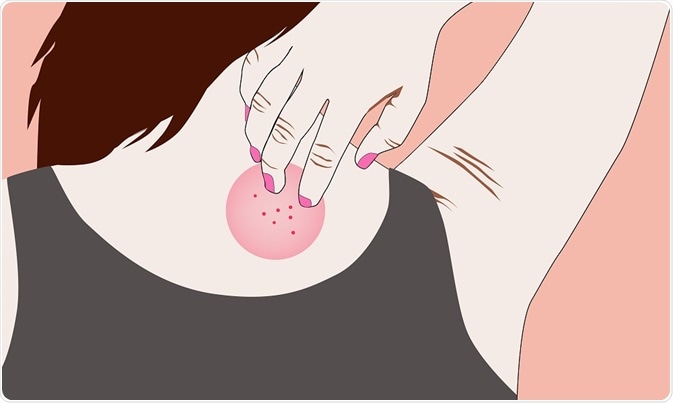Ringworm is a fungal skin infection characterized by a red circular rash. Although no worm is involved in the disease, the name ringworm probably came from its ring-shaped worm-like appearance.

Nicole Rerk | Shutterstock
Ringworm is a fungal infection that can be developed on the skin of any part of the body. The center of the ring remains pale, shiny, and flaky, while the edges become red, inflamed, and scaly.
Also known as tinea corporis, ringworm is closely related to athlete’s foot or tinea pedis, jock itch or tinea cruris, and scalp ringworm or tinea capitis. Ringworms that develop in the hands and nails are known as tinea manuum and tinea unguium, respectively.
What causes ringworm?
This highly contagious skin infection is caused by mold-like parasites that can be spread easily between people and animals. Some ways of infection transmission include direct skin contact with infected people, skin contact with infected animals, direct contact with personal or household belongings of infected people, and prolonged skin contact with highly infected soil.
Risk factors that are associated with ringworm include living in a tropical climate, living in close proximity and sharing belongings of an infected person, participating in sport activities that require skin-to-skin contact, wearing tight clothing, and weakened immune system.
How is ringworm diagnosed?
A physical examination of the site of infection is often sufficient to diagnose ringworm. The infection can appear at multiple body sites, and the severity of infection can range from mild lesions to erythema multiforme, which is characterized by co-existing bacterial infections.
In some cases, microscopic examination is needed to confirm the diagnosis. In this process, a portion of the infected skin is stained with potassium hydroxide and analyzed under the microscope. Presence of fungal hyphae confirms ringworm.
If the microscopic analysis is unsatisfactory, fungal culture can also be performed to diagnose ringworm. In this process, an infected skin part is cultured in Sabouraud’s medium; however, it takes almost 3 weeks to get positive fungal clones.
Wood lamp or ultraviolet light is helpful in differentiating erythrasma caused by Corynebacterium minutissimum (coal-red fluorescent) from tinea cruris (non-fluorescent).
How is ringworm treated?
Antifungal medicines are generally used to treat ringworms. In general, different types of medication are prescribed depending on the site of infection.
Ringworm that appears on the skin is treated with over-the-counter antifungal ointment or cream. These medicines are applied on the skin twice daily for 2 to 4 weeks. Same treatment is also applicable for athlete’s foot.
If the infection becomes chronic and severe, oral antifungal medicines are needed. To prevent softening and breaking down of the skin, additional therapy with foot powder or talcum powder may also be used together with the primary treatment.
In scalp ringworm, a systemic antifungal medication is more beneficial than a topical one. Shampoos containing selenium sulfide can also be used as an additional therapy.
In jock itch, over-the-counter antifungal cream, powder, or spray can be used twice daily for 10 to 14 days. To reduce the itchy sensation, cool compresses (2 to 6 times daily) are very useful. In case of severe infection, systemic medication is recommended.
How can I protect myself from ringworm?
The risk of ringworm can be reduced by considering some important steps. These include:
- Collecting information on ringworm personally and educate others
- Maintaining good personal hygiene
- Trying to stay cool and dry in hot climates
- Avoiding close contact with infected animals
- Limiting the sharing of personal belongings
Sources
- www.aad.org/public/diseases/contagious-skin-diseases/ringworm#overview
- www.mayoclinic.org/…/syc-20353780
- https://www.cdc.gov/fungal/diseases/ringworm/health-professionals.html
Further Reading
- All Ringworm Content
- What is ringworm?
- Ringworm Causes
- Ringworm Symptoms
- Ringworm Treatments
Last Updated: Nov 15, 2018

Written by
Dr. Sanchari Sinha Dutta
Dr. Sanchari Sinha Dutta is a science communicator who believes in spreading the power of science in every corner of the world. She has a Bachelor of Science (B.Sc.) degree and a Master's of Science (M.Sc.) in biology and human physiology. Following her Master's degree, Sanchari went on to study a Ph.D. in human physiology. She has authored more than 10 original research articles, all of which have been published in world renowned international journals.
Source: Read Full Article
